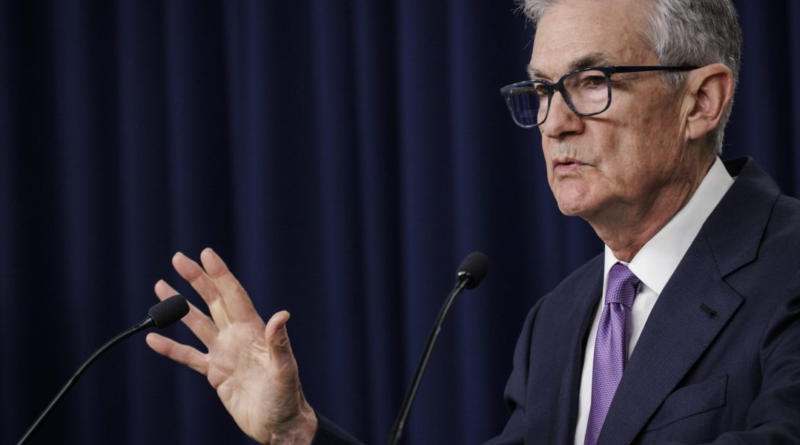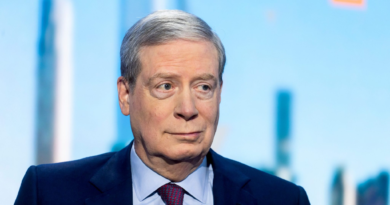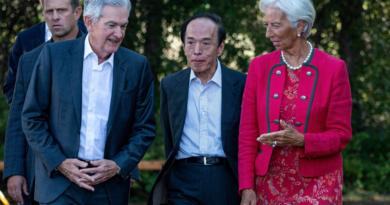Inflation fails to fall below 3%, disappointing economic forecasts
Annual inflation in the United States cooled last month yet remained elevated in the latest sign that the pandemic-fueled price surge is only gradually and fitfully coming under control.
Tuesday’s report from the Labor Department showed that the consumer price index rose 0.3% from December to January, up from a 0.2% increase the previous month. Compared with a year ago, prices are up 3.1%.
That is less than the 3.4% figure in December and far below the 9.1% inflation peak in mid-2022. Yet the latest reading is still well above the Federal Reserve’s 2% target level at a time when public frustration with inflation has become a pivotal issue in President Joe Biden’s bid for re-election.
Excluding the volatile food and energy categories, so-called core prices climbed 0.4% last month, up from 0.3% in December and 3.9% over the past 12 months. Core inflation is watched especially closely because it typically provides a better read of where inflation is likely headed. The annual figure is the same as it was in December.
Biden administration officials note that inflation has plummeted since pandemic-related supply disruptions and significant government aid sent it soaring three years ago. And a raft of forward-looking data suggests that inflation will continue to cool.
Still, even as it nears the Fed’s target level, many Americans remain exasperated that average prices are still about 19% higher than they were when Biden took office.
THIS IS A BREAKING NEWS UPDATE. AP’s earlier story follows below.
WASHINGTON (AP) — Inflation may have fallen below a 3% annual rate last month, which would be the lowest level in nearly three years and a potentially significant milestone as the Biden administration seeks to bolster Americans’ views of the economy before the November elections.
Economists have estimated that when the government issues the latest consumer price index Tuesday, it will show that prices rose just 0.2% from December to January for a third month in a row, according to forecasts compiled by data provider FactSet. Falling gas prices are expected to have slowed overall inflation.
And compared with a year earlier, inflation is thought to have cooled to 2.9%, down sharply from 3.4% in December. That would be the lowest year-over-year inflation figure since March 2021, when prices began spiking as a result of pandemic-related supply disruptions and higher consumer spending fueled by stimulus checks.
A decline in inflation below 3% would provide President Joe Biden with an opportunity to claim that price increases are steadily cooling even as the economy continues to grow and unemployment remains near a half-century low. Still, many Americans remain frustrated that the pandemic-related inflation surge — the worst in 40 years — has left average prices about 19% higher than they were when Biden took office.
Tuesday’s data, if it proves to be as mild as expected, may also contribute to the “greater confidence” that Federal Reserve officials have said they need to conclude that inflation is sustainably declining to their 2% target level, allowing them to start cutting interest rates from their current high levels.
Still, not all the inflation measures that will be reported Tuesday are expected to be so favorable. Excluding volatile food and energy costs, so-called “core” inflation could look stickier. Core inflation is watched closely because it typically provides a better read of where inflation is likely headed.
Core prices are forecast to have risen 0.3% in January for a third straight month. Though that figure would reduce annual core inflation from 3.9% to 3.7%, it would still be well above the level the Fed would like to see.
One factor that probably kept core prices up last month is that January is when many businesses impose price increases. While the government seeks to adjust its inflation data for such seasonal factors, it doesn’t always do so perfectly.
Economists at Goldman Sachs have forecast that such adjustments will raise prices, in particular, for car insurance, prescription drugs and health care services. Other analysts have projected that the costs of hotel stays and airline fares jumped from December to January.
Because such figures will likely show that inflation remains elevated, most economists think the Fed will want to wait until May or June to begin cutting its benchmark rate from its 22-year-high of roughly 5.4%. The Fed raised its key rate 11 times, from March 2022 to July of last year, in a concerted drive to defeat high inflation. The result has been much higher borrowing rates for businesses and consumers, including for mortgages and auto loans.
Tuesday’s data will also shed light on a concern of the Fed, which Chair Jerome Powell highlighted during a recent news conference: Most of the decline in inflation so far has stemmed from falling prices for goods, including used cars, furniture and appliances, which have dropped in six of the past seven months.
The costs, though, of services — auto repairs, health care, hotel rooms, concerts and other entertainment — are still rising at a brisk pace. Core services prices, which exclude energy, jumped 5.3% last year. By contrast, goods excluding food and energy rose just 0.2%. The Fed will want to see some cooling in services prices to become more assured that inflation is declining.
A rate cut by the central bank typically lowers the costs of mortgages, auto loans, credit cards and other consumer and business borrowing, and could bolster the economy. But a stronger economy could also pose a challenge for the Fed because faster growth can accelerate wages and consumer spending. If businesses aren’t able to keep up with greater customer demand, they can respond by raising prices, which would worsen inflation.
In the final three months of last year, the economy grew at an unexpectedly rapid 3.3% annual rate. There are signs that growth remains healthy so far in 2024. Businesses engaged in a burst of hiring last month. Surveys of manufacturing companies found that new orders rose in January. And services companies reported an uptick in sales.




